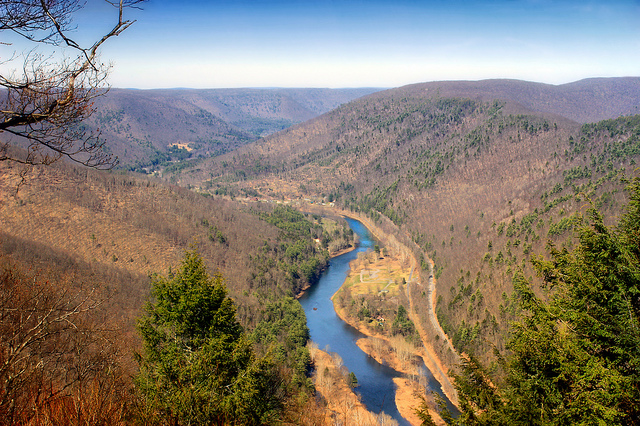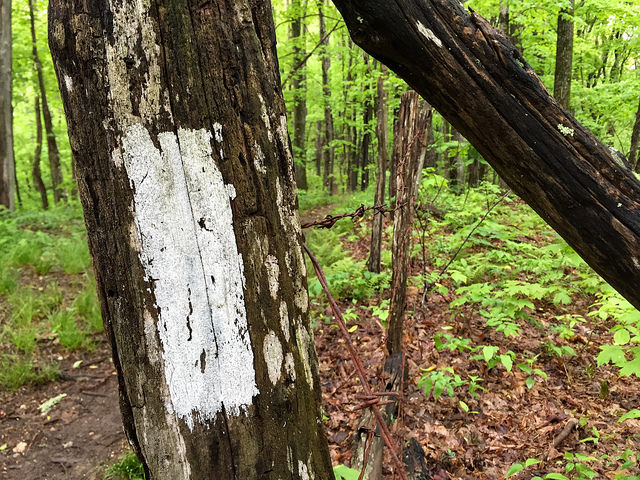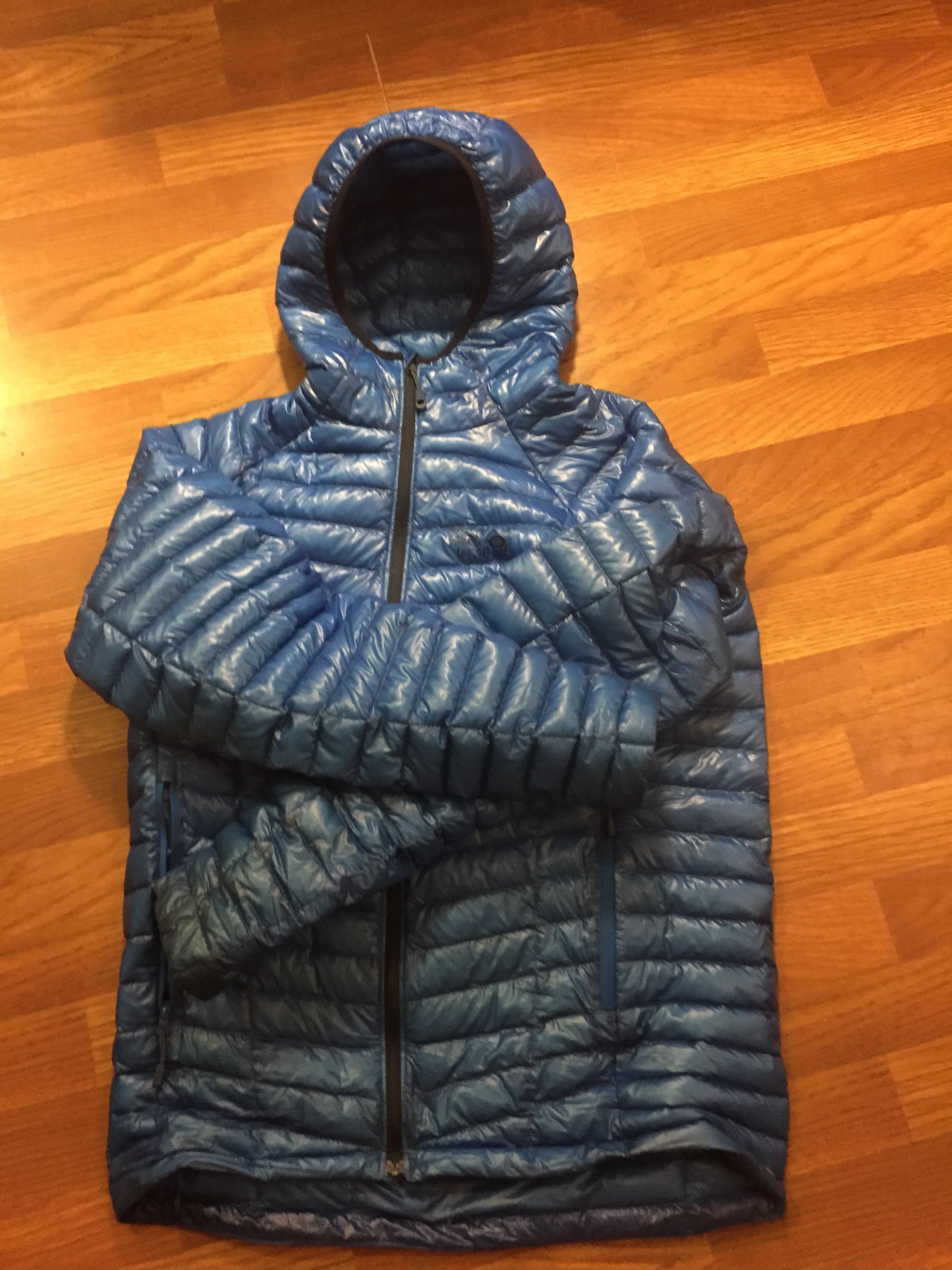East Coast Hiking: Weather and Clothing During The Warmer Seasons
I’ve always been drawn to hiking and backpacking, and this is largely due to the fact that every outing is vastly different in it’s own unique way. Different locations, weather, and terrain always render every hike it’s own independent experience, regardless of length or difficulty. Perhaps the most important factor that contributes to these changes, is the season during which a hike takes place. Every season is known for a specific quality that it brings to the natural world; spring is known for it’s mud, summer for it’s sunshine, fall for it’s mild temperatures, and winter for it’s blistering cold. Now that the warm temperatures are officially here to stay, it is important to shed some light on some basic knowledge that every hiker must have before they venture out for a hike on the East Coast. Despite the fact that virtually everyone is accustomed to the changing seasons in our everyday lives, extra considerations must be made on the trail to ensure that a safe and enjoyable hike is achieved. (Note: as stated in the title, this article is centered around the seasonal changes that occur on the East Coast only).
Spring

(photo courtesy of Nicholas A. Tonelli)
The leaves are starting to bud, the flowers are blossoming, and rays of sunshine are replacing the frigid winter winds; spring has arrived! Personally, the warmer weather that spring provides always makes me incredibly anxious to get out into the backcountry, and some of the most fun excursions I’ve been on occurred during the transition from winter to summer. However, the warmer weather can be deceiving, as the weather during the spring can be very unpredictable.
Weather and Terrain
Many backpackers are unprepared for the temperatures experienced in the spring. This is because most people are only outside during the day, when it is sunny and warm. However, even though spring temperatures do rise quite a bit, they tend to plummet right back down to winter temperatures after the sun goes down. For this reason, it is essential that backpackers pay attention to the trends in the weather, and do not let 70°F temperatures during the day fool them into not bringing enough clothing to sleep comfortably down to 20°F. The possibility of snow and ice exists, especially in areas of high elevation, so hikers should continuously check weather forecasts and trail updates before they leave. Carrying Microspikes or snowshoes may be necessary, depending on location and conditions. Spring is also known as prime mud season. I’ve been fortunate enough to spend a lot of time hiking in a state that is well known for it’s wet conditions; Vermont, which is sometimes described as Vermud. This experience has taught me first hand, how important it is be prepared with extra socks in the spring, because your feet are going to be soaked. Every. Single. Day.
Related reading: Base Layers for Backpacking (What You Need to Know)
Clothing
When hiking in the spring, I wear a pair of zip-off, polyester hiking pants. The extra warmth and protection provided by the pants come in handy on the colder days and around camp, but the zip-off feature allows me to hike in shorts if the temperatures get hot. I usually shy away from wearing regular shorts during the spring when backpacking, since having a pair of pants to wear around camp is much warmer. During the day, I usually just hike in a polyester athletic shirt, and keep a light fleece readily available if I need a bit more insulation. Once I get to camp, I put on a pair of long underwear, a base layer on my upper-body, a clean shirt, my fleece layer, an insulation layer (which in my case is a down jacket), and then my hiking pants. I keep my rain jacket, a beanie hat, and gloves available if I feel like I’m not warm enough. This, coupled with a 15 degree down sleeping bag is usually enough to get me through a cold spring night.
Summer

(photo courtesy of Daniel Norton)
The sun is shining, the temperatures have soared, and the mosquitos are out in full force; welcome to summer! Due to the summer’s mild weather, trails in the summer see the most amount of traffic out of all four seasons. A lot of this traffic is due to an influx of beginners, who are trying their hand at the activity of hiking for the first time. Despite the warm temperatures, increased backcountry traffic, and greater amounts of daylight, summer hiking still requires a reasonable amount of preparedness in order to experience a safe and enjoyable outing.
Weather and Terrain
Though hiking in the warm summer temperatures is certainly safer than hiking in the freezing cold, it still provides some risks, the most notable being heat exhaustion. Heat exhaustion occurs when one’s body simply overheats; some symptoms of heat exhaustion are heavy sweating, faintness, and muscle cramps. A less severe, but more common risk associated with hiking in the summer is the risk of dehydration. To minimize the chances of succumbing to heat exhaustion or dehydration, I always make an active effort to drink at least 4 liters of water over the course of a day when hiking in hot weather (it should be noted that your individual needs may vary). Perhaps the biggest weather related risk in the summer is the risk of lightning storms. Consistently check the weather prior to leaving for an outing, avoid areas of high elevation if you see a storm approaching, and research general lightning safety tips to minimize the risk of being struck.
Clothing
Choosing hiking attire in the summer is fairly straightforward compared to the other seasons. Just about any combination of a synthetic shirt, a pair of athletic shorts, a rain jacket, and some sort of light insulation will do the trick for when you’re on the move. However, there are some other considerations that must be made for overnight backpacking. Temperatures in the summer, especially towards its beginning and end, can still drop down to chilly levels, so it is important that backpackers be equipped with some extra layers for when in camp. I usually take a pair of long underwear, a down jacket (which may be overkill, but I consider it my “luxury item” as I’m a cold sleeper), and an extra shirt to sleep in. Another consideration that must be made, is how to deal with the bugs. I’m fairly good at tolerating bugs (or perhaps I just don’t taste very good?), but hikers who have a harder time with this may want to consider hiking in lightweight pants and a long sleeve shirt to minimize the amount of open skin that bugs can target. Carrying a head net for mosquitos is also a very practical way to minimize the annoyance of bugs.
Though everyone’s individual needs will very, this article serves as a starting point for what to expect from the elements on the East Coast this summer, and what hikers should wear to best deal with them. As green, lush, and beautiful as the East Coast may be, there are still many risks to be aware of, even when hiking during the warmer seasons!
This website contains affiliate links, which means The Trek may receive a percentage of any product or service you purchase using the links in the articles or advertisements. The buyer pays the same price as they would otherwise, and your purchase helps to support The Trek's ongoing goal to serve you quality backpacking advice and information. Thanks for your support!
To learn more, please visit the About This Site page.







Comments 1
A couple of caveats need to be added here. Elevation, especially in your neck of the woods, the forecast called for 40~50° and a chance of rain. Easy hiking weather. The White Mountains tried to kill a couple.
https://www.bostonglobe.com/metro/2016/06/10/freezing-hikers-rescued-from-new-hampshire-mountain/KSM7m7BAsEf4f3Tz8MQ3AL/story.html
Another is hydration during summer moths should include replacing electrolytes. Last yr one of our very own was airlifted off the A.T. when he drank like a camel but didn’t replace his electrolytes.
https://thetrek.co/an-easy-hike-gone-terribly-wrong/